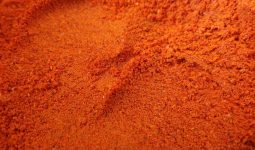Have you ever been confused about choosing the right type of knife for your particular purpose?
With so many different types of meat knives out there, from cleavers to boning knives and everything in between, it’s easy to get lost in the jargon.
And also miss the subtle differences that make each knife suitable or unsuitable for different tasks.
Whether you’re picking out the set of types of meat knives, you’ll keep in your kitchen or replacing old tools with new, sharp ones, understanding what makes each knife unique will help you choose the types of meat knives that fit your needs best.
Types of Meat Knives
1. Chef Knife

A chef knife is sometimes referred to as a French knife or a cook’s knife. These are among the types of meat knives that are essential for any kitchen.
It can chop, mince, slice, and dice almost anything. Its blade generally ranges in size between 5 and 14 inches, and its handle length varies from 4 to 10 inches.
Some chef knives are also serrated on one side (meaning they have little teeth), so you can make clean cuts without worrying about crushing your food (or your fingers).
A good chef knife should last years if well taken care of! Read more in our guide here.
2. Fillet knife
The most common knife used to cut meat is a fillet knife, with a blade that curves upward from end to end.
There are several different designs on the market, but fillet knives generally have sharper blades and more pointed tips than other types of meat knives for cutting through soft tissue.
Fillets are ideal for cleaning small fish such as trout and salmon and thin strips of meat from larger animals like beef or pork.
When purchasing a fillet knife, make sure it’s durable enough to withstand corrosion from bone and strong enough to handle any fish you need to remove skin and scales from.
Look for an ergonomic grip that won’t slide around in your hand when you’re cutting up large pieces of meat or tough skin.
3. The Steak Knife
Found on most dinner tables, steak knives are usually 8 inches long and crafted from stamped steel or forged steel.
Forged steak knives are stronger than stamped steel and, thus, better suited for heavy-duty cutting.
There is no right or wrong way to use a steak knife, though many experts advise against using them on hard foods such as bread or potatoes (this can dull their edge).
It is also best to avoid placing these knives in a dishwasher, where they may rust.
Also known as “non-serrated,” straight-edged knives come in a wide range of sizes, with some designed specifically for slicing meat and others made more suitable for slicing vegetables.
4. The Cleaver
If you’re looking for types of meat knives that can tackle meat with brute force, look no further than a meat cleaver.
Cleavers are heavy and have wide blades, which makes them perfect for splitting through large cuts of tough meat.
The downside to using a cleaver is it’s not much use when you need precision. The broad blade won’t make clean cuts on small pieces or thin slices.
If you like cutting up chicken, go ahead and grab a cleaver. But be prepared to sacrifice some speed and accuracy in your mincing.
Plenty of other types do it better if those are your priorities! A cleaver is useful for tasks such as hacking through bone, chopping up large hunks of meat, or breaking down big fish into fillets.
You should also consider what kind of handle you want before buying one; most come with a plastic or wooden handle, but handles are also made from materials like metal.
Some people even choose to get their custom handles made from animal bones! It all depends on what feels comfortable in your hand.
A good quality knife will last for years and only improve over time as its edge gets sharper and more precise.
5. The Carving Knife
There’s a reason types of meat knives have flared blades like the carving knife.
It’s so that you can slice through meat relatively easily while simultaneously providing your guests (and yourself) with a show.
It doesn’t hurt to have a carving knife in your arsenal if you’re serving roast beef, turkey, or pork.
However, if it isn’t necessary for any of those three meals, don’t bring out your new toy—you may never need to use it again.
There is more than one type of carving knife on Amazon, and you can buy cheap ones.
6. The Paring Knife
A paring knife is a small, narrow-bladed utility knife typically used to trim the fat and remove the skin from poultry, fruit, or vegetables.
The paring knife helps mince garlic or cut smaller fruits like berries in half before peeling.
While all knives can technically be utility knives, you may want to purchase a dedicated paring knife for your kitchen toolbox if you plan on using it a lot.
Paring knives are sold in both plain and serrated edge models. Choose whichever types of meat knives work best with your slicing needs.
7. The Bread Knife
This broad, serrated knife with a long blade is ideal for slicing through soft and hard bread. It’s also good at cutting cakes and pies, such as cheesecakes, due to its thin blade design.
Bread knives are sometimes called tomato knives because they have a thin profile that can easily cut through tomatoes without crushing or tearing them.
To prevent dulling or breaking your bread knife, use it only on bread—and never on anything else in your kitchen.
Even fruits like apples should be cut with a smaller fruit knife. A bread knife’s serrated edge can tear and rip delicate ingredients rather than cut cleanly through them.
If you reach for your bread knife to slice an onion or other ingredient, there’s probably a better tool available!
8. The Utility Knife
Utility knives are generally inexpensive, basic blades that come in many shapes and sizes.
They’re usually shorter than chef’s knives and have broader, thicker blades that make them suitable for cutting meat but can also be used on vegetables.
They tend to feature either a serrated or straight edge. Despite their name, utility knives are one of your more versatile types of meat knives options.
They get less attention than others. Utility knives can also trim the fat and remove the skin from chickens.
9. The Boning Knife
This knife is used to remove large sections of meat from a carcass.
They are typically thin and flexible and have narrow tips that allow you to cut around bones.
Among the types of meat knives, boning knives are also helpful for filleting fish or separating ribs, brisket, and other types of meat.
The thin blade easily avoids cutting through muscle fibers when separating parts.
When not used, boning knives should be stored on their own or with other small, dull kitchen utensils, such as spoons.
For safety reasons, they shouldn’t be placed where they can come into contact with sharp objects like paring knives.
When preparing meat with a boning knife, you’ll want to use a standard grip.
Hold it so your index finger is along one side of its handle and your thumb is on the other.
Your fingers should wrap around both sides of its handle. This type of grip will help ensure control over your cuts.
You can also hold it by placing your index finger along one side and wrapping all four fingers around that side. The tip should rest on top of your pinky finger.
How to Choose the Right Knife?
First and foremost, when selecting among the types of meat knives, you should decide whether you want a slicing knife or a butcher knife.
Slicing knives are perfect for cutting through beef, pork, and poultry. They’re often long and thin, with rounded tips that ensure delicate cuts every time.
Butcher knives are generally heavier than slicing knives because they’re typically used to cut through joints and bones.
To make things simple, it’s best to select one type of knife at first—or stick to using your kitchen’s existing steak knives!
You can always add another type down the line if you find one better suited to your needs in certain instances.
Conclusion
Choosing the right type of meat knife, or any kitchen knife, can be confusing and overwhelming, especially if you’re new to cooking.
With so many different types of meat knives available on the market, you may have to spend hours reading up on different styles and brands to figure out which knife you need.
With this in mind, this article has helped walk you through the most common types of meat knives used for meat and how each compares to others.
Also, discussing their pros and cons to help you make an informed decision about which knife type fits your needs best.








